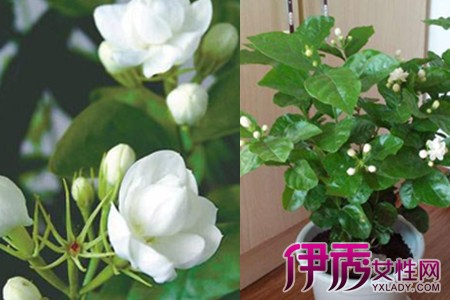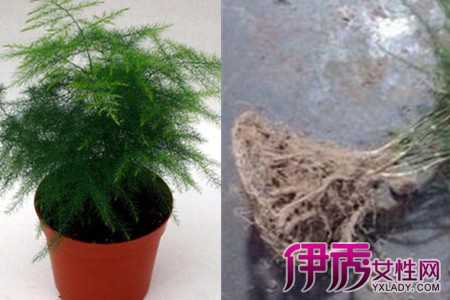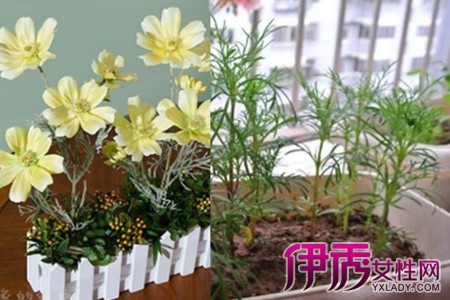The cultivation methods of jasmine flowers are worth learning.

Jasmine is suitable for growing in a humid, hot, well-ventilated environment, so let it grow in sunny places in breeding. If there is plenty of sunshine, it will have branches and leaves, and if there is no sunshine, the leaves will be scarce and unhealthy.
Jasmine flowers are suitable for cultivation in loose soil, which has good air permeability. When jasmine flowers grow in such soil, the roots of jasmine will breathe comfortably. It likes the soil slightly more acidic. General sandy soil or semi-sandy soil is very suitable for raising this kind of flower.
Jasmine is a kind of plant that likes to be wet, but it is afraid of stagnant water in the basin. If there is too much water in the basin, the flower roots will have difficulty breathing and may be soaked and rot. If you put it outside for farming in summer, pour out some of the water in the basin when it is urgent on a rainy day.
This kind of flower should be watered twice a day in hot weather to avoid wilting leaves caused by lack of water. If the leaf curls, spray it with some water.
Jasmine flowers often grow some shell insects and other diseases and insect pests, usually should pay attention to observation, found that it is necessary to spray some medicine to control.
In the process of cultivating this kind of flowers, fertilizers should be applied twice a month, and some bone meal, raw cake powder and so on can be applied. You don't need to apply nitrogen fertilizer. Just apply some phosphorus and potassium fertilizer. Nitrogen fertilizer can promote leaf growth, while phosphorus and potassium fertilizer can promote flowering and prolong flowering period. If there is a phenomenon that the branches and leaves are numerous but do not blossom, it is necessary to control the amount of fertilizer and water and increase the application of phosphorus and potassium fertilizer.
This kind of flower grows very fast in summer, so it is necessary to prune its branches and leaves frequently. If you want it to grow sturdy when pruning branches and leaves, you can start to cut off the branches about 10 centimeters above the root, and the new branches that will grow will be short, strong and wide. Cut off the branches when you finish blooming, so as not to consume more nutrients.
You must know this little knowledge about the cultivation of jasmine.
When I was young, I often bought air fresheners at home. Nowadays, a lot of people buy air fresheners, which are used in places such as bedrooms or bathrooms. Among them, the most popular smell can be said to be jasmine. The smell of jasmine itself is very good, and it is plain to ask. Not as strong as roses smell, nor as tasteless as lotus flowers. Gently smell the fragrance of jasmine, as if it was spring.
That kind of elegant aroma stayed in the nasal cavity for a long time and did not want to leave. The jasmine not only smells intoxicating, but also blooms beautifully. Crisp leaves, accompanied by pure white flowers. People can't help but think of their favorite people wearing pure white clothes, standing in the sun waving to you.
Yes, jasmine is so charming. Because, more and more people also like to plant some jasmine at home. It can not only improve the air at home naturally, but also make people relaxed and happy. More importantly, it is pure white and beautiful.
But how to raise jasmine? Is it just like ordinary plants to water it? Next, I will introduce to you some methods of cultivating jasmine. Jasmine is mainly distributed in the south of our country, so for jasmine, it is more accustomed to the humid climate and likes the semi-overcast environment.
Most species of jasmine can not stand the cold environment, when the temperature is relatively low, the branches and leaves will be "frostbitten" phenomenon. Therefore, even if you raise jasmine in the south, you should pay attention to moving the jasmine into the house in winter. Do you really want to raise a jasmine plant when you know this? Come on, let's do it.
The course of Jasmine Culture methods of Jasmine Culture
The jasmine comes from India, and its white petals have a strong fragrance and a health effect. Common jasmine flowers are potted ornamental flowers, so they are suitable for home breeding. Next, we will introduce the culture methods of jasmine.
Culture methods of jasmine flowers
I. the culture method of jasmine-- light
Jasmine likes to grow in a hot, humid and ventilated environment, and can thrive in a large amount of rich light. When jasmine has enough light, the leaves will be greener and the flowers will be more fragrant. If there is not enough sunlight, the flowers will bloom less, and it is best to strengthen the warmth of jasmine flowers in winter.
Second, the culture method of jasmine-- water
Jasmine is not tolerant to drought. If it is not watered in time, the leaves of jasmine will turn yellow. It is best to water twice a day in summer and wait until the temperature is cool to avoid damage to plants caused by the temperature difference.
III. The cultivation method of jasmine-- soil
The cultivation of jasmine soil needs fertile soil, through sandy soil, maintaining in slightly acidic soil can make jasmine grow healthier.
Fourth, the culture method of jasmine-- fertilization.
Jasmine is very suitable for growth in the hot summer season, relying on organic fertilizer and phosphorus and potassium fertilizer such as bone meal fertilizer can help jasmine grow better, and can maintain the measure of fertilizing twice a month, but be careful not to fertilize too much. The second is not to be too frequent. If the jasmine is not fertilized enough, it will lead to poor flowering.
- Prev

How to reproduce asparagus three methods are convenient and easy to use
Asparagus is a very beautiful flower, cultivated in the basin as a bonsai is of great appreciation value. There are three propagation methods of asparagus, one is planting seed propagation, the other is individual plant propagation, and the other is cutting propagation.
- Next

Learn how to grow Persian chrysanthemum and learn it to make you really happy.
Persian chrysanthemum, a flower that originated in Persia, has a beautiful legend spread in this prairie country. It is said that whoever can know Persian chrysanthemum on the prairie can reap full happiness, so today we are going to talk about how to grow happiness with our own hands.
Related
- Fuxing push coffee new agricultural production and marketing class: lack of small-scale processing plants
- Jujube rice field leisure farm deep ploughing Yilan for five years to create a space for organic food and play
- Nongyu Farm-A trial of organic papaya for brave women with advanced technology
- Four points for attention in the prevention and control of diseases and insect pests of edible fungi
- How to add nutrient solution to Edible Fungi
- Is there any good way to control edible fungus mites?
- Open Inoculation Technology of Edible Fungi
- Is there any clever way to use fertilizer for edible fungus in winter?
- What agents are used to kill the pathogens of edible fungi in the mushroom shed?
- Rapid drying of Edible Fungi

